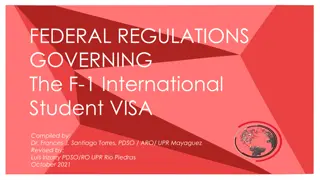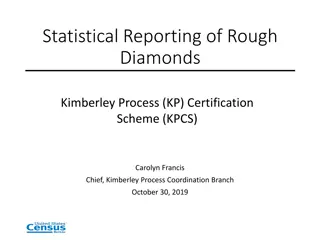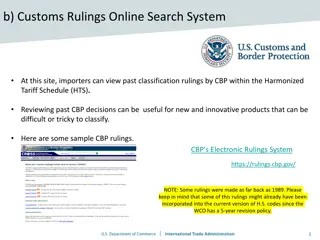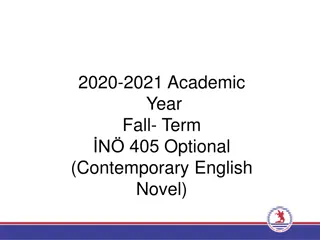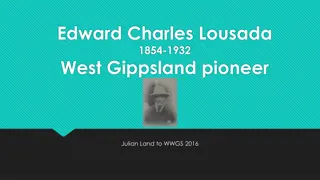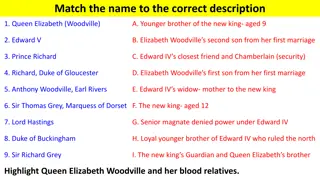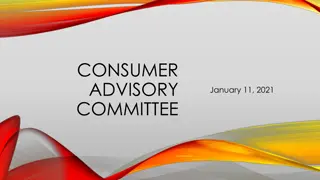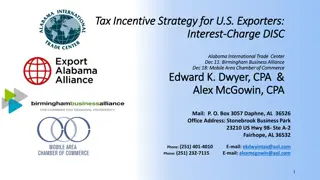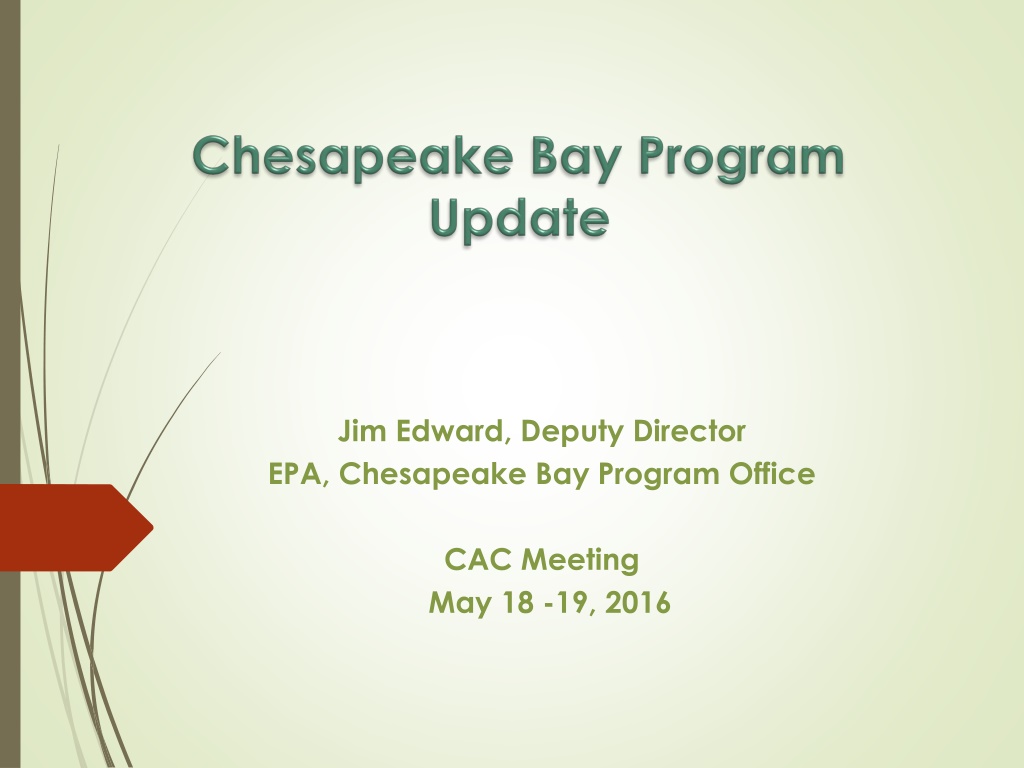
Chesapeake Bay Program Updates and Accountability Details
Stay informed on the latest developments regarding the Chesapeake Bay Program, including updates on the Chesapeake Bay Accountability and Recovery Act, Independent Evaluator appointments, and key considerations for meeting the intent of the law. Learn about the process of nominating an Independent Evaluator, options analyzed, and important factors to ensure compliance and effectiveness.
Download Presentation

Please find below an Image/Link to download the presentation.
The content on the website is provided AS IS for your information and personal use only. It may not be sold, licensed, or shared on other websites without obtaining consent from the author. Download presentation by click this link. If you encounter any issues during the download, it is possible that the publisher has removed the file from their server.
E N D
Presentation Transcript
Jim Edward, Deputy Director EPA, Chesapeake Bay Program Office CAC Meeting May 18 -19, 2016
Chesapeake Bay Program Updates 1. Elements of the Chesapeake Bay Accountability and Recovery Act Independent Evaluator Budget Reporting 2. Brief Review of the Environmental Finance Symposium 3. Brief Highlights of the Executive Order Progress Report 4. Updates on the Mid Point Assessment 5. Diversity Demographics Profile
Chesapeake Bay Accountability and Recovery Act (2014) Independent Evaluator Chesapeake Bay Crosscut Budget
Independent Evaluator There shall be an Independent Evaluator for restoration activities in the Chesapeake Bay watershed, who shall review and report on (1) restoration activities; and (2) any related topics that are suggested by the Chesapeake Executive Council.
What needs to be done? Executive Council may nominate an independent evaluator Within 30 days the Administrator selects a nominee that demonstrates excellence in Marine science Policy evaluation Other studies relating to complex environmental activities First report due to Congress in 180 days, every 2 years after
3 Options Analyzed Option 1: EPA Science Advisory Board Convener Standing Committee Nominating individuals with expertise to the Committee Option 2: Awarding a grant to an entity through the EC nomination/Administrator selection Nominating an institution to act as the Independent Evaluator Option 3: The National Academy of Science Convener Panel Individuals are selected based on expertise
Key Considerations Format Cost to Program Timeliness Sustainability Readiness Meets Intent of law Avoids actual or appearance of conflict of interest
Meeting the Intent of the Law Nominations for independent evaluator submitted by the EC Science-based institution of higher education Administrator appoints IE from among nominees with consultation of the scientific community Demonstrates excellence in marine science, policy evaluation, or other studies relating to complex environmental restoration activities Reports not later than 180 days after date of appointment and once every 2 years thereafter
Discussion and Decision Agree on the selected option Assign next steps to include Initial task/charge development Recommended expertise needed for individual members Process for nominating members Bring back to PSC in May for final approval of approach
CBARA Budget Accounting Definition of Federal restoration activity a program or project carried out with the express intent to directly* protect, conserve, or restore living resources, habitat, water resources, or water quality in the Chesapeake Bay watershed, including programs or projects that provide financial and technical assistance to promote responsible land use, stewardship, and community engagement in the Chesapeake Bay watershed. *Definition of a State restoration activity also includes the word Or indirectly
Categories May Include: physical restoration, planning, feasibility studies, scientific research, monitoring, education, infrastructure development
Interagency Cross-cut Budget OMB Director, in consultation with the EC, shall submit to Congress a financial report containing: Proposed federal and estimated state funding to be carried out in the succeeding fiscal year (FY17) Expenditures for Federal, and to the extent available, State restoration activities for preceding 2 fiscal years, current fiscal year, and succeeding fiscal year (FY 14, 15, 16, 17)
Funding Levels and Timeline Funding Levels - For the first 3 years, funding > $300,000 - After that, funding > $100,000 Timeline -- In June EPA to send BDR to Federal agencies and jurisdictions on behalf of OMB. -- Six weeks to review. -- Report to Congress due Sept. 30, 2016 and each year there after.
Chesapeake Bay Environmental Finance Symposium University of Maryland April 25-26, 2016 Opening Panel: Creating Financing Efficiencies and Cost Reductions Eric Letsinger, Quantified Ventures Incentivizing Innovation Paul Carroll, City of Newport, Rhode Island Influencing the Consumer Marketplace Perry Raso, Matunuck Oyster Bar, South Kingston, Rhode Island Integrating Public and Private Capital Jag Khuman, Maryland Department of the Environment Mitigating Restoration Investment Risk Nick Dilks, Ecosystem Investment Partners, Baltimore Maryland Environmental Markets Jeremy Sakulsky, Environmental Incentives, South Lake Tahoe, California
Symposium Themes 1. Reducing Implementation Costs 2. Incentivizing Innovation 3. Creating and Building Consumer Demand 4. Integrating Public and Private Capital 5. Mitigating Investment and Implementation Risk 6. Water Quality Trading and Environmental Markets
Federal Funding Summary 2011-2016 Approximately $2.84 billion over 6 years FY 2011 FY 2012 FY 2013 FY 2014 FY 2015 FY 2016 President s Budget Request Operating Levels Operating Levels Operating Levels Operating Levels Operating Levels Department/Agency $153,578,000 $121,488,000 $135,449,000 $111,014,000 $126,725,000 USDA Total $133,183,000 Farm Service ($37,081,000) $34,304,000 $34,304,000 $30,200,000 $34,753,000 $149,740,000 $119,828,000 $98,000,000 $75,300,0003 $94,000,000 NRCS $95,000,000 Office of Chief Economist $150,000 $350,000 $350,000 $$350,000 $350,000 $350,000 $3,080,000 $3,688,000 $1,310,000 $2,795,000 $1,060,000 $2,175,000 USFS U.S. Dept. of Commerce / NOAA $19,346,250 $9,208,425 $10,119,000 $8,436,442 $7,202,750 $8,648,615 DoD Total $13532,013 $121,254,616 $89,106,945 $118,855,437 $63,441,667 $120,766,960 $7,521,000 $101,169,616 $71,146,945 $93,855,437 $41,841,667 Services $70,721,960 USACE $6,011,013 $20,085,0005 $17,960,0005 $25,000,0007 $21,600,000 $50,045,000 $42,817,218 $23,906,000 $21,227,233 $25,758,725 $30,725,986 DOI Total $33,593,000 $2,591,000 BLM FWS $15,161,27 $10,146,000 $10,294,000 $11,553,745 $11,070,986 $13,443,000 $19,169,640 $6,411,000 $3,876,233 $4,515,980 $8,466,000 NPS $5,568,000 USGS $8,486,304 $7,349,000 $7,057,000 $9,689,000 $11,189,000 $11,991,000 EPA $248,873,881 $184,010,730 $174,821,744 $197,504,967 $206,301,507 $193,806,590 Total $486,648,362 $459,867,771 $430,723,922 $461,569,571 $434,396,910 $487,041,665
Fiscal Year 2016 Chesapeake Bay Program Funding Region 2 $224,000 Region 3 $69,501,000 Philadelphia $4,543,259 Annapolis $64,957,741 Office of Water $60,000 Office of Enforcement and Compliance Assurance $675,000 Office of General Counsel $462,000 Office of Environmental Information $1,516,000 Office of Administration and Resources Mgmt. $562,000 Total $73,000,000
Provide EPA Oversight of 2014 Progress Enhanced Oversight * Green fading to yellow indicates potential downgrade at the end of the 2014-2015 milestone period if specific actions aren t taken.
Issues: Land Use changes Climate Change Geographic (James River & Conowingo) New BMPs
Whats Next for the Midpoint Assessment Local area targets: Task Force recommendations spring 2017, partnership decisions summer 2017, factor into Phase III WIPs 2018 Phase 6 Models: independent scientific peer reviews spring/summer 2016; continue Partnership reviews 2016- early 2017; management application starting late spring 2017 Conowingo Dam: Partnership decisions on path forward fall 2016; solid understanding of level of nutrients/sediment loads to be offset spring 2017; factor into Phase III WIPs 2018
Whats Next for the Midpoint Assessment Climate Change: independent scientific peer review summer 2016, partnership decisions on how to factor into WIPs fall 2016-spring 2017, factor into Phase III WIPs 2018 2025 Projections: Partnership discussions about how to address increased load due to growth within the Phase III WIPs fall 2016-spring 2017 Phase III WIP Expectation: share draft with Partners summer 2016; actively seek feedback/input; finalize expectations by summer 2017
Whats Next for the Midpoint Assessment Implications from Monitoring Trends: initial explanations of long term monitoring trends winter 2016, factor into development of Phase III target loads in 2017 and into Phase III WIPs in 2018 Analysis of Programmatic Capacity: factor into development of Phase III target loads in 2017 and into Phase III WIPs in 2018 Phase III WIP Target Loads: approve suite of Partnership models for management application spring 2017; develop target loads spring-winter 2017; factor into Phase III WIPs 2018
Establishing a Diversity Baseline for the Chesapeake Bay Program Using a Simple Demographic Profile Tool
Diversity Management Strategy and Workplan Identify minority stakeholder groups that are not currently represented in the leadership, decision making and implementation of conservation and restoration activities, and create meaningful opportunities and programs to recruit and engage them in the partnership s efforts. Diversity Outcome Explore the use of organizational demographic profile tools (e.g. Guidestar and D5) for the Bay Program jurisdictions, agencies, partners and other NGOs in the Bay watershed to report on diversity representation within their organizations. Diversity Management Strategy Establish a baseline of the level of diversity in the CBP (staff, boards, programs and initiatives aimed at increasing internal diversity). Diversity Workplan
Why a demographic profile? An important aspect of tracking and assessment is to collect baseline data in order to measure progress towards the goal/outcome. Green 2.0 made a national call to environmental organizations to share their diversity data in order to begin improving diversity at all levels.
CBP Partners who Responded Chesapeake Bay Trust Alliance for the Chesapeake Bay Conservation Fund National Fish and Wildlife Foundation Chesapeake Bay Foundation And more
Others have begun collecting their own diversity data to establish baselines for diverse attendance and participation in conferences: Choose Clean Water Coalition Conference Alliance Chesapeake Bay Watershed Forum Others?
What is the CBP Diversities Profile? 10 Simple Questions Voluntary and anonymous Self-Identify responses Includes questions on management roles due to language in diversity outcome
The Process The Alliance for the Chesapeake Bay will conduct the profile on behalf of the Chesapeake Bay Program The profile will be sent to the Principals Staff Committee, Management Board, Advisory Committees, GITs, and workgroup members (using anonymous survey monkey tool). Encourage Chairs to incorporate in ongoing meeting agendas and make follow-up requests to their members. Demographic Profile analysis based on participant response.
Timeline May: Develop simple survey monkey instrument Early June: Email from Al Todd to CBP membership 30 days to complete the profile Mid June: Follow-up email from CBP leadership (MB chair, GIT chairs, etc.) Summer 2016 Present results to Management Board September 2016: Post results on CBP website Press release and web story
Questions? Jim Edward edward.james@epa.gov www.ChesapeakeBay.net


